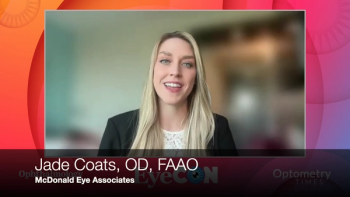
IKA 2024: Following up with patients is the key to corneal shape improvement
Annual follow-ups for patients with keratoconus can help them become better candidates for cross-linking procedures, according to William Trattler, MD.
In his talk with Steven Greenstein, MD, and Justin Schweitzer, OD, FAAO, William Trattler, MD, highlighted the importance of bringing patients with keratoconus back into the office every year to assess the improvement of corneal shape. Their talk was given at the International Keratoconus Academy Keratoconus Symposium, held in Bethesda, Maryland on May 18 and 19.
Video Transcript
Editor’s note - The following transcript has been lightly edited for clarity.
William Trattler, MD:
Hi, I'm Bill Trattler, from Miami, Florida, and I'm here at the International Keratoconus Academy conference and I gave a talk today along with Justin Schweitzer and Steve Greenstein and we talked about considerations for patients with keratoconus. And 1 of the topics he talked about is how common patients may progress, keratoconus patients, how likely they may progress. And while there's a thought process that once you're over the age of 30 or 40, patients don't progress, we discussed a paper that I presented ASCRS last year that we looked at patients aged 40 to 81 and found that 41% of patients progressed looking at least 6 months of follow up. And so there's actually a good chunk of patients in our study, 41%, that can progress. And so it's therefore very important to follow patients with keratoconus every year to look for progression, especially the older patients. Don't assume that because they're over the age of 40, they're stable. And if they do progress, we discussed also that these patients are excellent candidates for undergoing cross-linking as a procedure, and it will be covered by their insurance typically because you've documented progression. So these patients can benefit from the procedure to strengthen the cornea, stop their condition from progressing further, and actually often get improvement in the corneal shape.
I think one of the problems we have is that many patients are seen who are older and are told, "Listen, you're unlikely to be progressive, don't worry about things," where doctors may not repeat typography every single year. So our goal is really surveillance. We're trying to watch these patients and if they do progress, they can really benefit from the treatment because cross-linking can strengthen the cornea. And often these patients will get improvement in their corneal shape and vision over time, who discussed the importance of of cross-linking in all age groups, not just kids but also patients in the middle ages and older.
Newsletter
Want more insights like this? Subscribe to Optometry Times and get clinical pearls and practice tips delivered straight to your inbox.













































.png)


